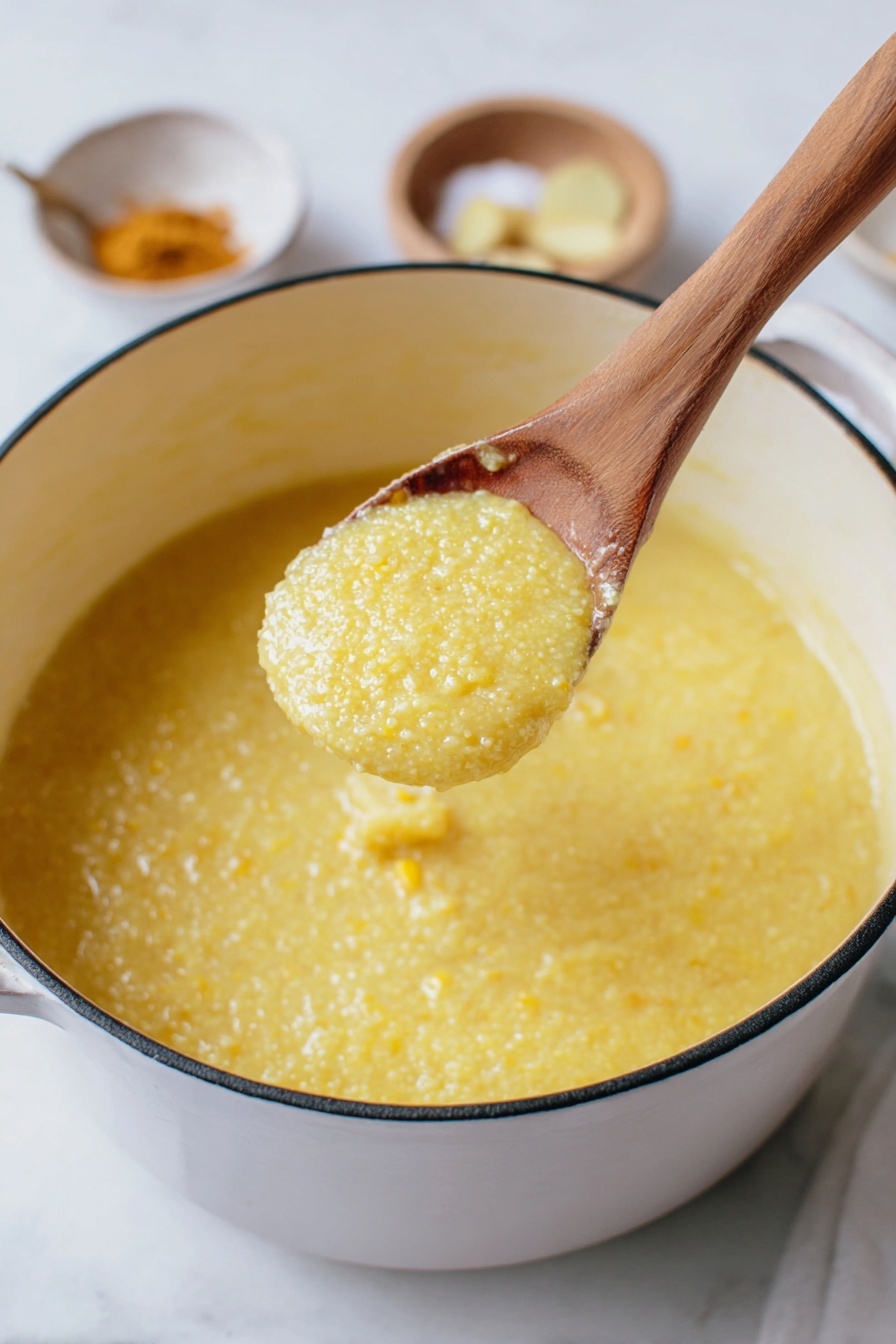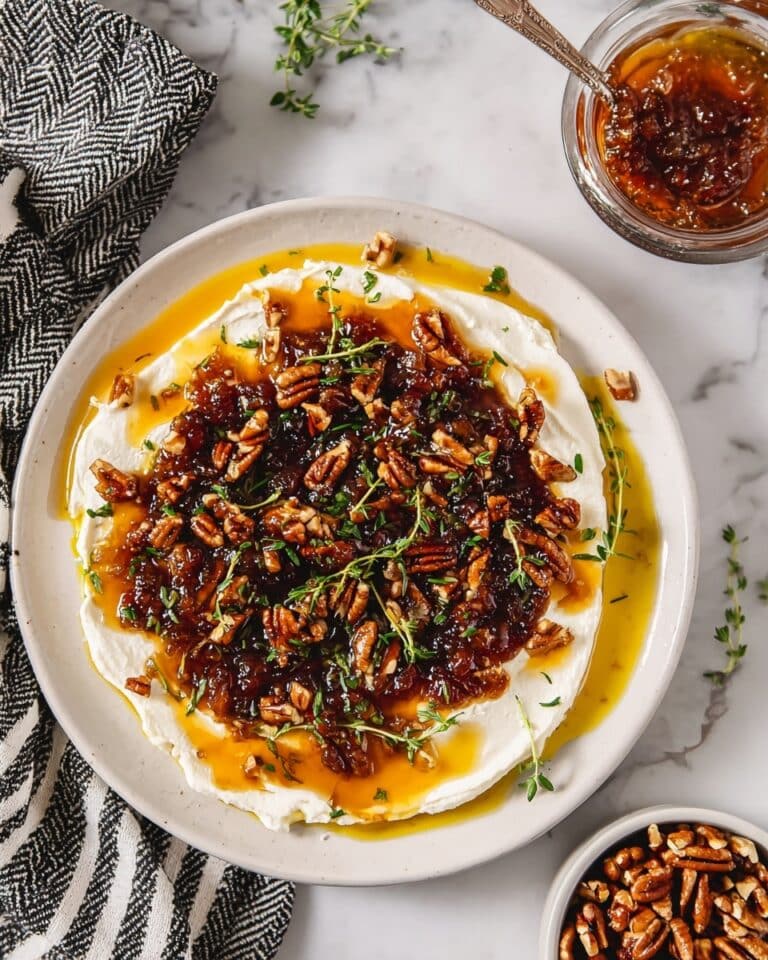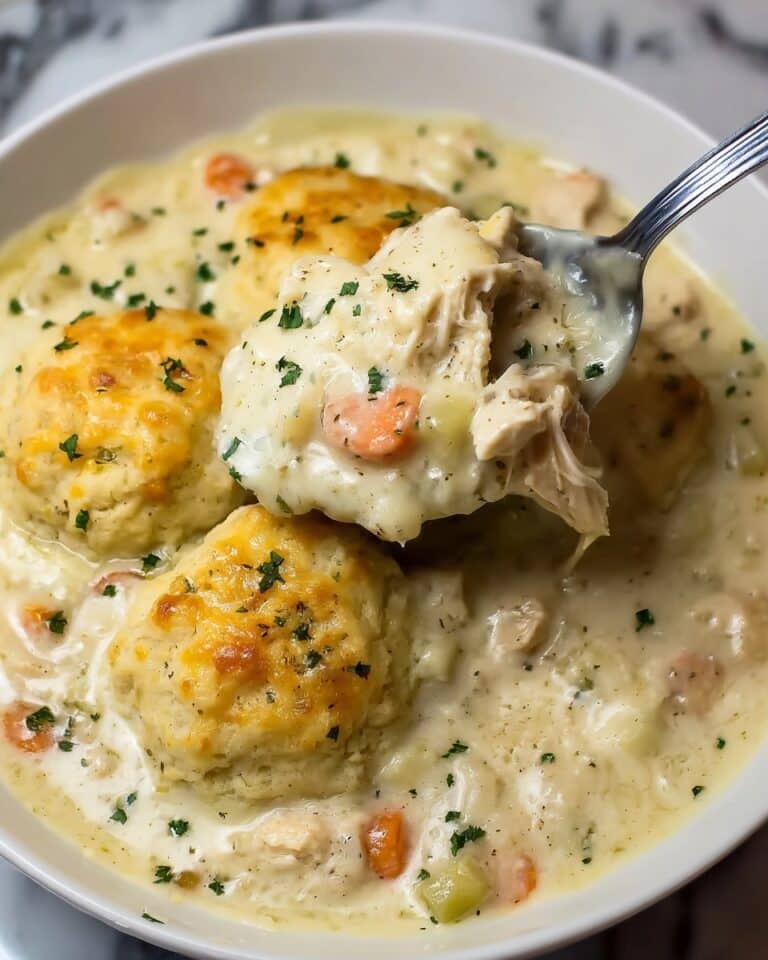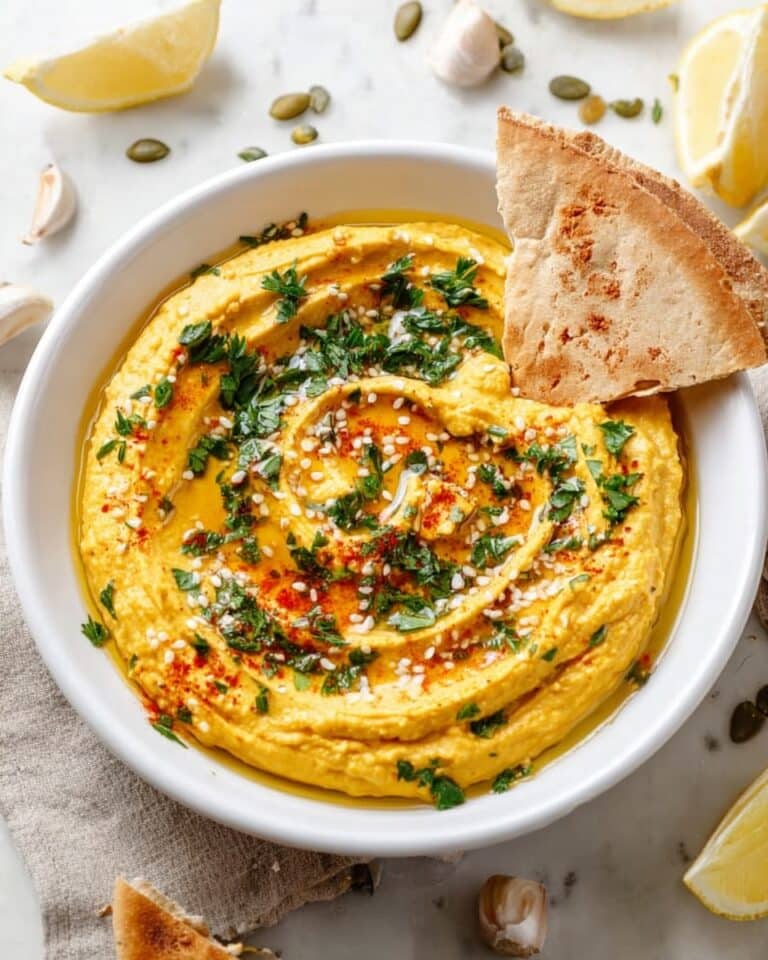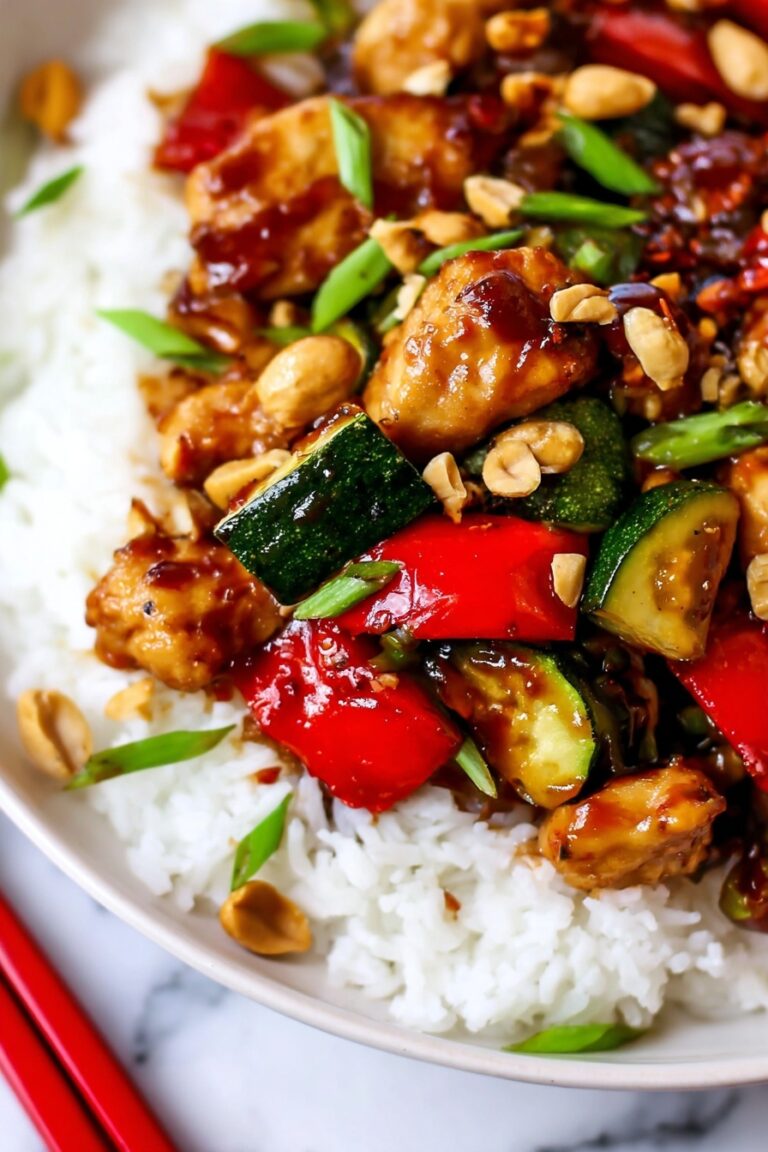Creamy Parmesan Polenta with Rosemary Recipe
If you’ve never made polenta at home, I promise you’re about to fall in love with this one. This Creamy Parmesan Polenta with Rosemary Recipe is pure comfort in a bowl, with the perfect balance of creamy richness and herby warmth that makes it feel special but never complicated. Whether you’re looking for a new side dish to elevate weeknight dinners or a cozy base for your favorite sauces and veggies, this recipe hits all the right notes — and I’ll walk you through how to nail it every single time.
Why This Recipe Works
- Simple Ingredients: Just a handful of pantry staples come together to create something incredibly satisfying.
- Perfect Creamy Texture: Slow cooking and stirring bring out a luscious, silky polenta that’s neither lumpy nor gluey.
- Fresh Rosemary Flavor: The subtle herbal note complements the Parm cheese without overpowering the dish.
- Versatile Side Dish: Pairs beautifully with everything from roasted veggies to grilled meats or simply eaten on its own.
Ingredients & Why They Work
Each ingredient in this Creamy Parmesan Polenta with Rosemary Recipe plays a crucial role in building its rich and comforting character. Here’s why I trust these simple components every time I make it, plus tips to help you shop and select the best versions for optimal flavor.
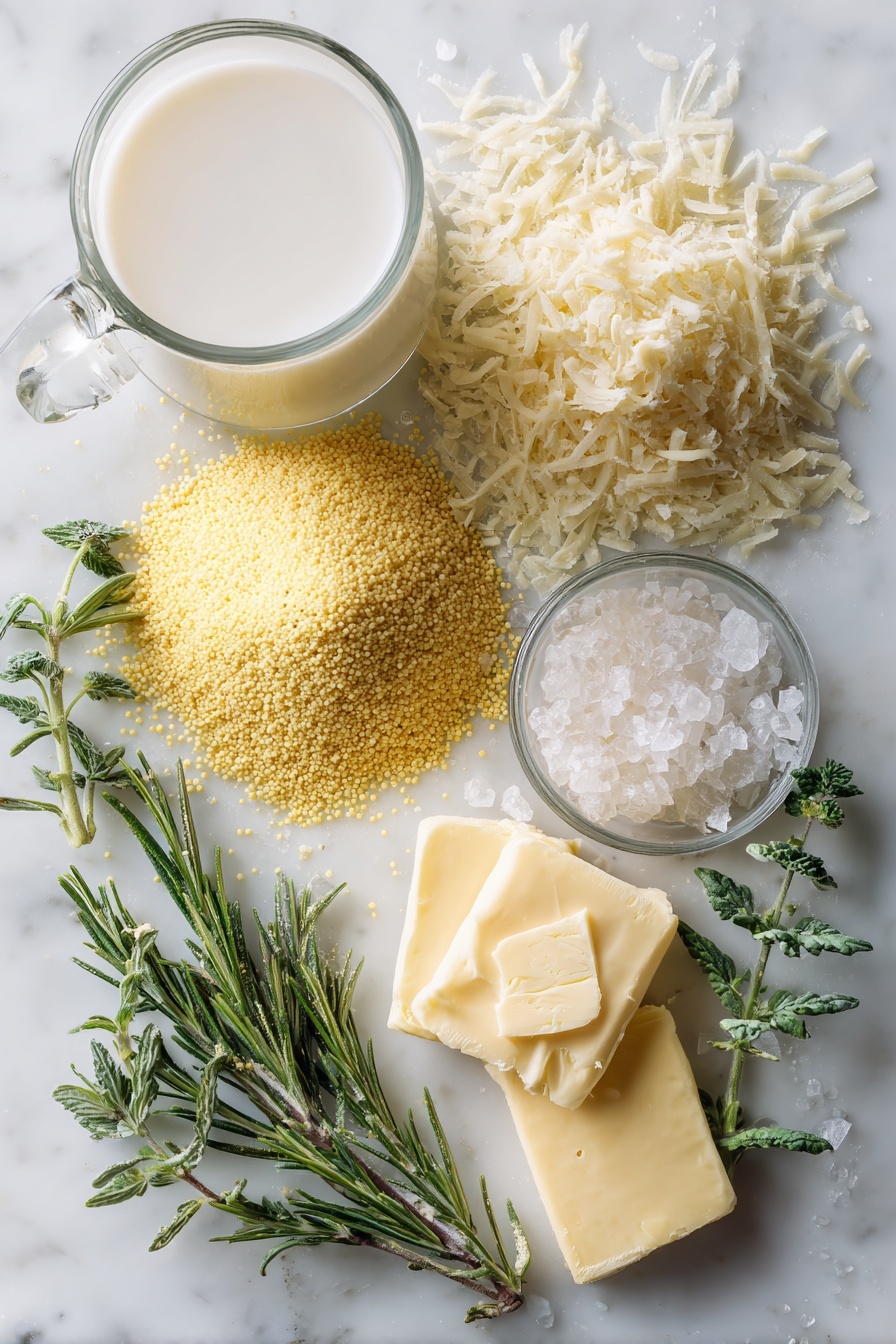
- Water: The base liquid to cook the polenta; using filtered water helps avoid off-flavors.
- Milk: Adds creaminess and richness — whole milk works best, but you can try unsweetened plant-based milk for a dairy-free twist.
- Kosher Salt: Preferred for its purity and larger flakes, which season the polenta evenly without overdoing saltiness.
- Cornmeal (Coarse or Medium-Grind): The star of the dish — I like medium grind for that perfect creamy texture that still feels substantial.
- Butter: Adds luscious fat and silkiness; good quality unsalted butter really shines here.
- Parmesan Cheese: Freshly grated Parmesan imparts a salty, nutty depth—grate it yourself for the best flavor and melt.
- Fresh Rosemary or Parsley (optional): Rosemary brings an earthy, aromatic note that elevates the entire dish, but parsley works too if you prefer something brighter.
Tweak to Your Taste
I love making this Creamy Parmesan Polenta with Rosemary Recipe my own by switching up a few elements based on the season or what’s in the fridge. Don’t hesitate to play around with it and find your favorite version—you can customize it easily without losing its comforting soul.
- Variation: When I want a slightly smokier flavor, I swap some of the water for chicken or vegetable stock—it adds extra depth without overpowering the polenta.
- Dairy-Free: Try using plant-based milk and olive oil instead of butter to keep things creamy yet vegan-friendly.
- Herbs: While rosemary is my go-to, thyme or sage work beautifully if you want to switch up the herbal notes.
- Thicker Consistency: If you plan to grill or fry leftovers, just reduce the liquid slightly for a firmer texture that holds its shape well.
Step-by-Step: How I Make Creamy Parmesan Polenta with Rosemary Recipe
Step 1: Bring Liquid to a Boil and Season
First, I combine the water and milk in a heavy saucepan or Dutch oven and bring it to a gentle boil. Adding kosher salt here evenly seasons the liquid. This is key because the flavor has to build from the ground up. Make sure not to rush this part—you want the base just right before adding the cornmeal.
Step 2: Slowly Stir in Polenta for Smoother Texture
Next, sprinkle the cornmeal gradually into the boiling liquid while whisking constantly. This little trick prevents lumps from forming and makes your polenta beautifully smooth. It does require a bit of patience and elbow grease, but that whisking pays off big time!
Step 3: Simmer Low and Slow, Stir Often
After all the cornmeal is incorporated, lower the heat to a gentle simmer and cover the pot. Now, here’s where many cooks either get frustrated or skip the stirring, but don’t—I recommend stirring every 10 minutes or so for 25 to 35 minutes. This prevents sticking and helps develop that creamy, fluffy texture. The polenta is done when it thickens and pulls away from the sides as you drag your spoon along.
Step 4: Stir in Butter and Parmesan for Velvet Finish
Once off the heat, stir in the butter and grated Parmesan cheese. This is where the dish really transforms—adding that rich, velvety mouthfeel combined with nutty, salty flavor. Taste and adjust salt if needed. If you’re adding fresh rosemary, fold it in now to infuse the subtle herbal aroma evenly.
Step 5: Serve Warm with Extra Cheese and Herbs
I serve it piping hot, topped with a little extra Parmesan and a sprinkle of rosemary or parsley. It’s simple but seriously good and perfect for any meal where you want comfort plus a touch of elegance.
Pro Tips for Making Creamy Parmesan Polenta with Rosemary Recipe
- Whisk Early and Often: Incorporate cornmeal gradually to avoid lumps, and don’t walk away once simmering—stirring prevents sticking.
- Use Freshly Grated Parmesan: Pre-grated cheese just doesn’t melt the same; fresh Parmesan makes a world of difference.
- Be Patient with Cooking Time: Low and slow cooking gives polenta that unmistakable creamy texture—trust the process.
- Salt Wisely: Use kosher salt for seasoning and taste as you go—too little salt can make the polenta bland, too much overwhelms the delicate flavors.
How to Serve Creamy Parmesan Polenta with Rosemary Recipe
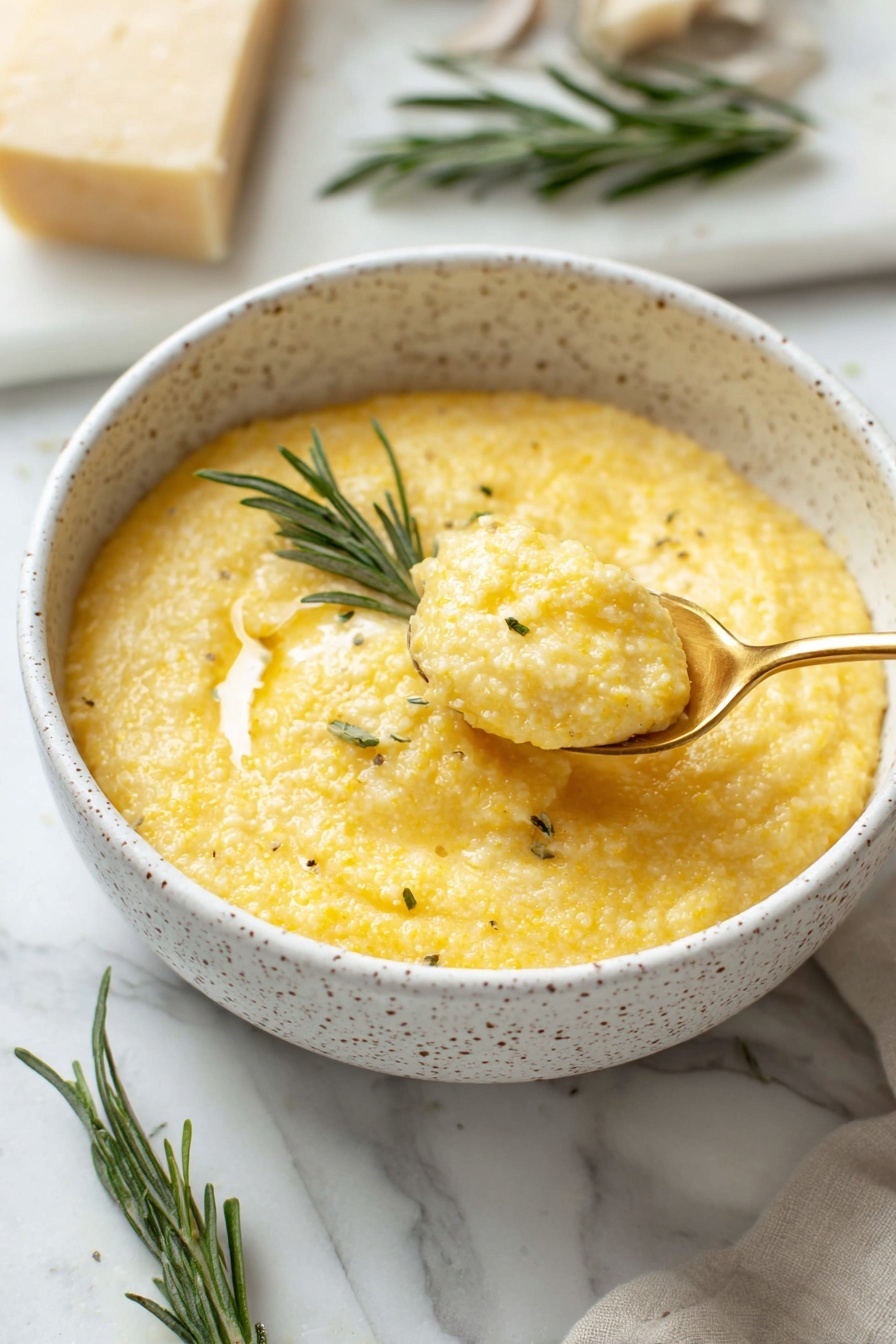
Garnishes
I’m a big fan of topping my creamy Parmesan polenta with extra shavings of Parmesan cheese and a fresh sprinkle of rosemary to highlight the herby aroma. Sometimes, I drizzle a little good-quality olive oil for an extra silky finish. A crack of fresh black pepper offers a nice contrast, too. If you’re feeling fancy, toasted pine nuts or crispy sage leaves make a beautiful, crunchy garnish.
Side Dishes
This polenta shines when paired with roasted or sautéed vegetables like mushrooms, asparagus, or Brussels sprouts. I also love serving it alongside a juicy grilled chicken breast or slow-cooked braised beef or pork for a complete, hearty meal. On nights I’m keeping it vegetarian, a saucy ratatouille or garlicky sautéed kale make perfect companions.
Creative Ways to Present
For special dinners, I like to spread freshly made polenta into a baking dish and chill it until firm, then cut it into rustic squares or rounds. These can be grilled or pan-fried until golden and crispy—such a fun way to serve individual portions that look extra fancy. Polenta cakes topped with caramelized onions and a sprinkle of rosemary bring applause every time.
Make Ahead and Storage
Storing Leftovers
Leftover polenta keeps really well in an airtight container in the fridge for up to 4 days. It will firm up as it cools, which is perfect if you want to turn it into polenta cakes later. Just make sure it’s completely cooled before sealing to avoid sogginess.
Freezing
I’ve frozen cooked polenta successfully by pouring it into a baking dish, letting it set, and cutting into portions before freezing each piece individually. When reheated, it holds texture well, especially if you plan to grill or pan-fry it. Keep it wrapped tightly to avoid freezer burn.
Reheating
Reheat leftover polenta gently on the stovetop with a splash of milk or water to bring back its creamy consistency. Stir often and avoid overheating or it can dry out. For polenta cakes, a quick sear in a hot pan gets the outside crispy while warming it through.
FAQs
-
Can I use instant polenta instead of regular cornmeal?
Instant polenta cooks much faster but has a different texture—if you’re after that traditional creamy consistency from the Creamy Parmesan Polenta with Rosemary Recipe, I recommend using coarse or medium-ground cornmeal and giving it the slow simmer treatment. That way you get a richer flavor and silky mouthfeel.
-
What’s the best way to prevent lumps in my polenta?
Whisking the cornmeal in gradually while the liquid is boiling is the key. Don’t dump it all in at once. Also, stir regularly during cooking to keep the mixture smooth and prevent thick patches from forming on the bottom.
-
Can I make this recipe dairy-free?
Absolutely! Substitute the milk with unsweetened almond or oat milk, and swap butter for olive oil or a plant-based margarine. Nutritional yeast can replace Parmesan to give you that cheesy flavor without dairy.
-
How do I know when my polenta is done cooking?
You’ll notice the polenta thickens and pulls away from the sides of the pan when you run a spoon around the edges. It should be fluffy, creamy, and not gritty anymore. This usually takes 25 to 35 minutes but varies slightly based on your heat and cornmeal grind.
Final Thoughts
This Creamy Parmesan Polenta with Rosemary Recipe holds a special place in my kitchen because it’s like a warm hug on a plate—comforting, simple, and endlessly versatile. Whenever I make it, I’m reminded how a few humble ingredients can create something magical that brings people together. I really hope you’ll give it a try and find the same joy in this classic dish that I have. Trust me, once you do, creamy polenta becomes your secret weapon for elevating everyday dinners.
Print
Creamy Parmesan Polenta with Rosemary Recipe
- Prep Time: 5 minutes
- Cook Time: 40 minutes
- Total Time: 45 minutes
- Yield: 6 servings
- Category: Side Dish
- Method: Stovetop
- Cuisine: Italian
- Diet: Vegetarian
Description
A comforting and creamy polenta recipe cooked gently with water and milk, enriched with butter and Parmesan cheese, and optionally flavored with fresh herbs like rosemary or parsley. Perfect as a warm side dish or base for various toppings.
Ingredients
Liquid Base
- 4 cups water
- 1 cup milk
Polenta
- 1 ½ teaspoons kosher salt
- 1 cup coarse or medium-grind cornmeal
Additions
- 3 tablespoons butter
- ½ cup grated Parmesan cheese, plus more for serving
- 2 teaspoons chopped fresh rosemary or parsley, optional
Instructions
- Boil liquids: Bring the water and milk to a boil in a heavy-duty saucepan or small Dutch oven. Stir in the kosher salt.
- Add polenta: Gradually sprinkle the cornmeal into the boiling liquid while whisking constantly to prevent lumps and ensure smooth texture.
- Simmer and stir: Reduce heat to a very low simmer, cover, and cook the polenta for 35 minutes, stirring approximately every 10 minutes to avoid sticking and encourage a fluffy consistency.
- Finish polenta: When thick and pulling away from the pan sides, remove from heat and stir in butter, Parmesan cheese, and additional salt to taste.
- Serve: Spoon the creamy polenta onto plates, garnish with fresh rosemary or parsley and extra Parmesan if desired. Serve warm.
Notes
- For firmer polenta suitable for frying or grilling, reduce liquid to 3 ½ cups and cool the cooked polenta in a baking dish before slicing and pan-frying in olive oil.
- Replace some or all of the water with stock or broth for a richer flavor.
- You can substitute milk with unsweetened plant-based milk for a dairy-free version, although texture may vary slightly.
- If you only have fine table salt, use half the amount of kosher salt indicated since it is denser and saltier by volume.
Nutrition
- Serving Size: 1 cup
- Calories: 220 kcal
- Sugar: 2 g
- Sodium: 350 mg
- Fat: 9 g
- Saturated Fat: 5 g
- Unsaturated Fat: 3 g
- Trans Fat: 0 g
- Carbohydrates: 26 g
- Fiber: 2 g
- Protein: 7 g
- Cholesterol: 25 mg

